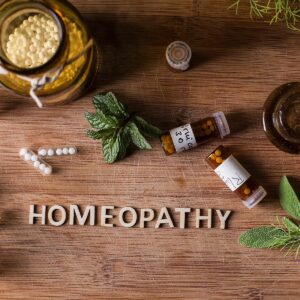
Celebrities Who Embrace Homeopathy
Celebrities like David Beckham and Cate Blanchett use homeopathy. It’s
4 year Practitioner Licentiate course
In-person or Online
2-year Practitioner Licentiate course
One-year foundation course
In-person or Online
FREE “Home Prescribers” Online Course
Disease is defined as a condition of the living animal or plant body, or one of its parts, that impairs normal functioning and is typically manifested by distinguishing signs and symptoms.
To understand the difference between homeopathic and conventional approaches, we need to identify their differing views of the symptoms that we express when our body is ill.
Orthodox medicine views symptoms almost as if they are the disease and need to be removed.
For example, in the case of arthritis, a patient might be given painkillers or anti-inflammatory medicine, but suppression of the symptoms does not cure the disease. The medication doesn’t heal arthritis, although it may help make a person feel better because it relieves severe pain.
We would call this the law of opposites. People are given anti-inflammatories for arthritis, antacids for gastritis, antihistamines for allergies, antibiotics for infection and antiemetics for sickness. So, whatever your body is doing, modern medicine tries to oppose that.
The law of opposites may apply in certain situations. For example, if you’re dehydrated, you need to rehydrate by drinking more water. If you’re too cold and hyperthermic, you need to find and conserve heat. The law of opposites makes sense in these situations because it helps your body maintain homeostasis. But these adverse conditions where the law of opposites applies are not illnesses.
Medication may create balance in specific disorders and can undoubtedly be temporarily helpful. And sometimes we do need to replace something that isn’t being made, for example, if someone isn’t making enough thyroxine. But this approach does not cure illness.
Think about how a doctor approaches arthritis, migraines or a patient with eczema. Though not necessarily in all situations, they manage symptoms in the majority of chronic complaints. They may prescribe medications that a patient could be on for their entire life.
Of course, these medications have side effects and will cause further problems with overall health.
So it’s how we look at the body symptoms that causes the divide between an orthodox and homeopathic approach. However, this doesn’t mean that the two systems don’t have some crossover points, and they can’t work together.
Homeopathy views symptoms as a way of bringing our attention to disease or “nature’s warnings of troubles from within”. They’re a way for our bodies to try and reimpose order and balance, and they’re not the disease itself.
For example, sweating when we have a fever is our body’s way of trying to cool us down. With food poisoning, if you eat something full of nasty bacteria, diarrhoea and vomiting happen so your body can get rid of it as quickly as possible.
Your symptoms are your body’s way of saying, “I’ve got to get rid of this”. They are not the disease or bacteria itself but your body’s way of trying to help or release it quickly before it gets worse.
Homeopaths see symptoms very differently. We see them as a way of attempting to regain balance, and we use them to try and find where the central disturbance is so that the body can start to heal itself.
Sometimes when we suppress a disease symptom, we may drive it deeper into the body, particularly with chronic conditions. For instance, if someone suppresses eczema, it may aggravate an underlying asthma.
Homeopaths are very careful about this. We believe that the body is always working in its own best interests, especially in acute disease. We need to listen to the symptoms, not just try to suppress them, and we can use them as a road map to help our patients get better.
TAKEN FROM THE FREE CHE ‘HOME PRESCRIBER COURSE’ WITH HILERY DORRIAN
Disclaimer
The information contained herein should not be used as a substitute for the advice of an appropriately qualified and licensed healthcare physician or other healthcare providers. The information provided here is for informational purposes only. The views, positions and opinions expressed in this presentation are those of the presenter and do not necessarily reflect the views of CHE or affiliated organisations.

Celebrities like David Beckham and Cate Blanchett use homeopathy. It’s

Men’s health encompasses a wide range of concerns that deserve

Disclaimer
Any views or advice on this website should not be taken as a substitute for medical advice or consulting a Homeopath, especially if you have a specific health complaint.
© 2023 Centre for Homeopathic Education. All Rights Reserved.
This website uses cookies so that we can provide you with the best user experience possible. Cookie information is stored in your browser and performs functions such as recognising you when you return to our website and helping our team to understand which sections of the website you find most interesting and useful. Privacy policy
Strictly Necessary Cookie should be enabled at all times so that we can save your preferences for cookie settings.
If you disable this cookie, we will not be able to save your preferences. This means that every time you visit this website you will need to enable or disable cookies again.
This website uses Google Analytics to collect anonymous information such as the number of visitors to the site, and the most popular pages.
Keeping this cookie enabled helps us to improve our website.
Please enable Strictly Necessary Cookies first so that we can save your preferences!